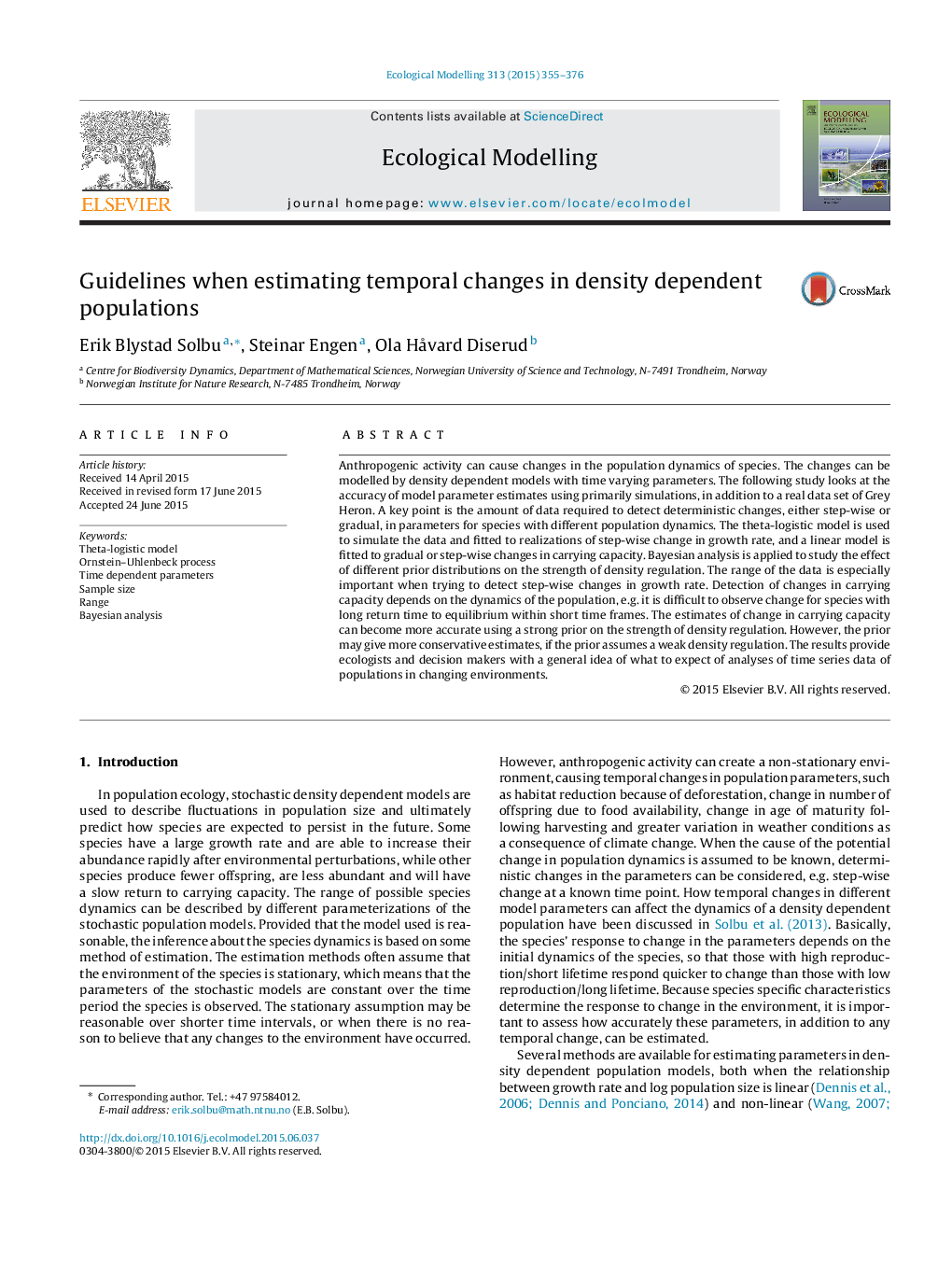| Article ID | Journal | Published Year | Pages | File Type |
|---|---|---|---|---|
| 6296640 | Ecological Modelling | 2015 | 22 Pages |
Abstract
Anthropogenic activity can cause changes in the population dynamics of species. The changes can be modelled by density dependent models with time varying parameters. The following study looks at the accuracy of model parameter estimates using primarily simulations, in addition to a real data set of Grey Heron. A key point is the amount of data required to detect deterministic changes, either step-wise or gradual, in parameters for species with different population dynamics. The theta-logistic model is used to simulate the data and fitted to realizations of step-wise change in growth rate, and a linear model is fitted to gradual or step-wise changes in carrying capacity. Bayesian analysis is applied to study the effect of different prior distributions on the strength of density regulation. The range of the data is especially important when trying to detect step-wise changes in growth rate. Detection of changes in carrying capacity depends on the dynamics of the population, e.g. it is difficult to observe change for species with long return time to equilibrium within short time frames. The estimates of change in carrying capacity can become more accurate using a strong prior on the strength of density regulation. However, the prior may give more conservative estimates, if the prior assumes a weak density regulation. The results provide ecologists and decision makers with a general idea of what to expect of analyses of time series data of populations in changing environments.
Related Topics
Life Sciences
Agricultural and Biological Sciences
Ecology, Evolution, Behavior and Systematics
Authors
Erik Blystad Solbu, Steinar Engen, Ola HÃ¥vard Diserud,
